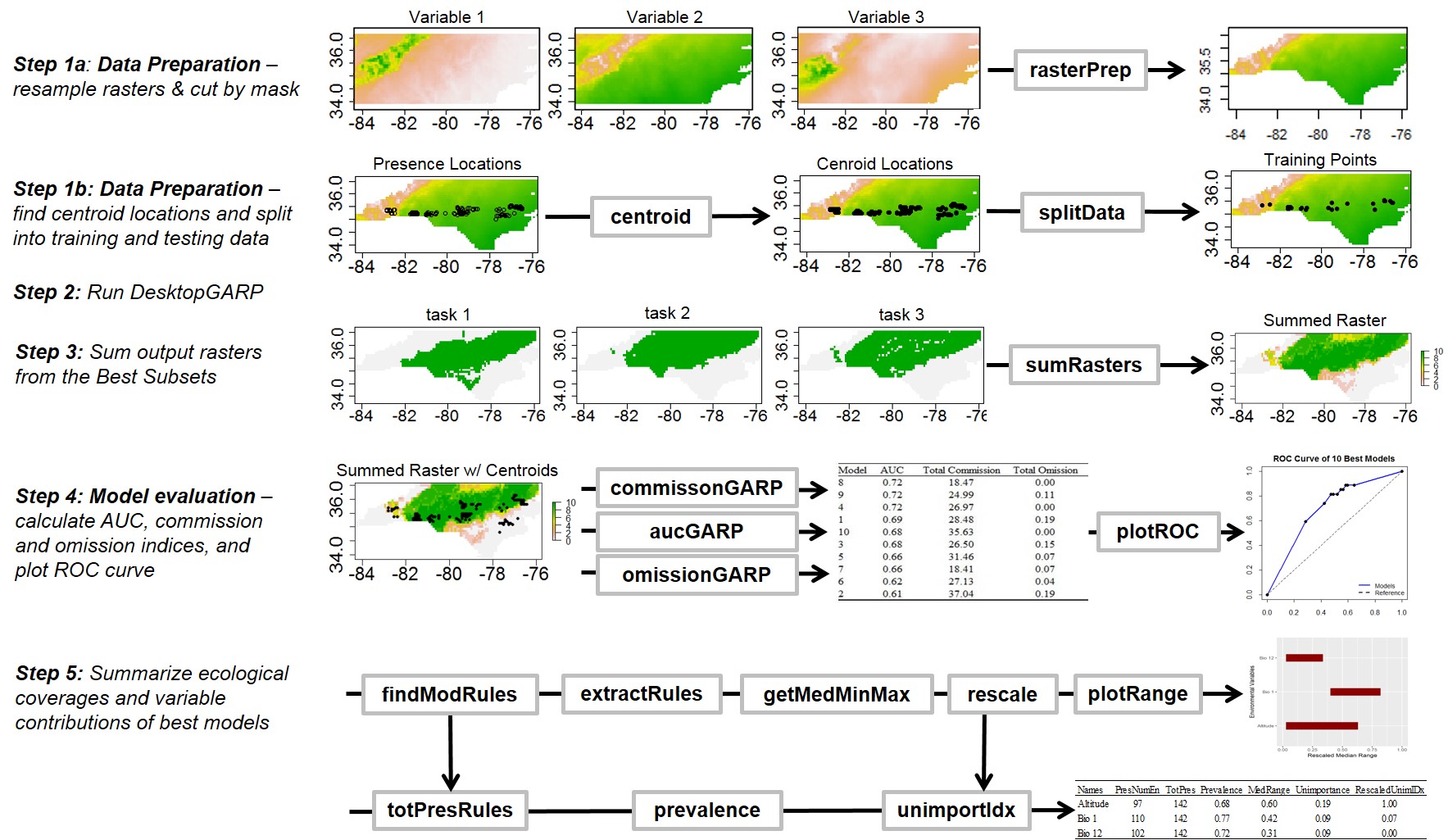Ecography

YANG, HAASE, BLACKBURN – GARPTools: R software for data preparation and model evaluation of GARP models
Catherine G. Haase, Anni Yang, Kristina M. McNyset, Jason K. Blackburn
Article first published online: 08 OCT 2021 Ecography
DOI: 10.1111/ecog.05642
ABSTRACT: The aim of the GARPTools package is to provide tools to prepare data for input into the desktop version of the genetic algorithm for rule-set prediction (GARP), for the evaluation of the accuracy of output models, and for summary/examination of environmental coverages used in GARP rule sets for best models in an experiment. GARP is a software package for biodiversity and ecological research that allows the user to predict and analyze wild species’ geographic distributions. GARP is a presence-background genetic algorithm that models species’ potential geographic distributions through an iterative process of training and testing that occurs through resampling and replacement of input data. GARP develops rule-sets of if/then logic statements that assign presence or absence, which are then mapped on the landscape. Toward this, GARPTools provides preparation functions including splitting species presence locations into training and testing data sets and resampling environmental layers to the same spatial resolution (raster cell size) and extent. Model evaluation functions are relevant to current procedures applied to species distribution modeling, including the receiver operating characteristic curves and omission and commission indices. There are also functions to estimate the contribution of environmental coverages (covariates) based on the GARP outputs by examining the individual rules. GARPTools intends to provide a means to systematically prepare data, evaluate models, and summarize environmental coverages among multiple systems and species without the need for complex software programming.
Read the full publication at Ecography